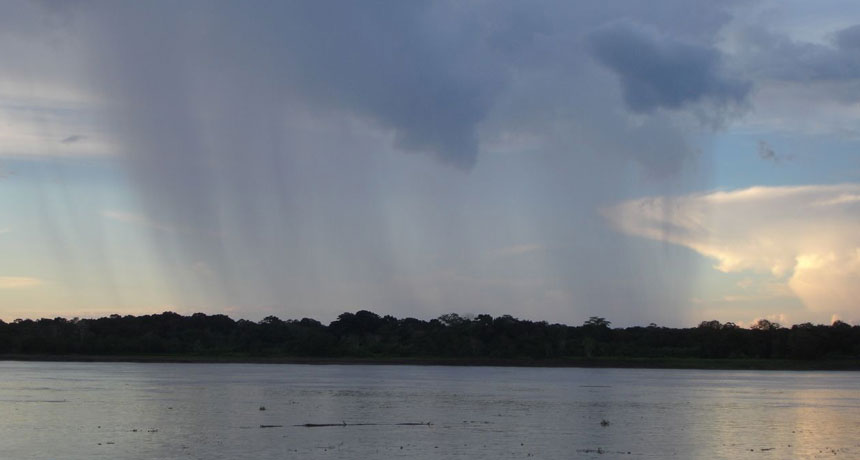Questions for ‘How ancient fish feed today’s Amazon’

A rain storm in the Amazon deposits minerals carried by dust in the atmosphere. It also washes minerals out of the forest soils.
10b traveling/Flickr (CC-BY-NC-ND 2.0)
Share this:
- Share via email (Opens in new window) Email
- Click to share on Facebook (Opens in new window) Facebook
- Click to share on X (Opens in new window) X
- Click to share on Pinterest (Opens in new window) Pinterest
- Click to share on Reddit (Opens in new window) Reddit
- Share to Google Classroom (Opens in new window) Google Classroom
- Click to print (Opens in new window) Print
To accompany feature “How ancient fish feed today’s Amazon.”
SCIENCE
Before Reading
1. Get a map of the globe. Locate the Sahara and the Amazon. On what continents can each be found? What lies between these two regions? How many kilometers (or miles) is one from the other?
2. Name three ways that the Amazon is different from other parts of the globe. Now do the same for the Sahara.
During Reading
1. What was Robert Swap doing in the Amazon in 1987?
2. Why are nutrients difficult to find in the Amazon?
3. How much phosphorus did Swap calculate falls each year on a piece of Amazon forest the size of a U.S. football field?
4. How did Swap figure out where the dust in the Amazon was coming from?
5. What important element can be found in dust from the Bodélé Depression?
6. Where does dust that falls on the Hawaiian Islands come from? How far has it traveled?
7. What is “desert crust”?
8. How does dust feed whales, penguins and fish?
9. What led Richard Washington to conclude that the Bodélé Depression would not keep making dust forever?
10. How could climate change affect the amount of dust coming to the Amazon from the Sahara?
After Reading
1. The Amazon has some of the world’s greatest biodiversity, with many types of animals and plants that can be found nowhere else. If no dust came to the Amazon from the Sahara, plants would not have enough nutrients. Animals, too, would likely be affected by the loss of dust. Explain what would likely happend to those animals, and why.
2. What might happen the next time the Bodélé Depression fills up with water if there aren’t any fish in it? How might that affect dust in the future? How might that affect the Amazon in the future?
MATHEMATICS
1. If winds in the Bodélé Depression scoured the desert for 3,000 years and removed 4 meters (13 feet) of stone each year, what is the rate of stone removal in centimeters (or inches) per year? Show your work.